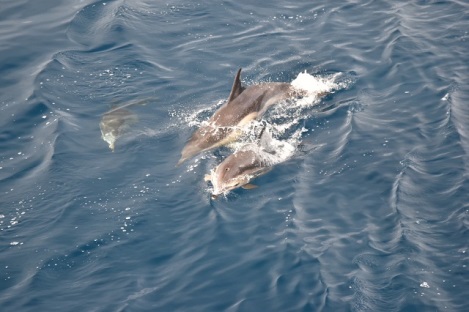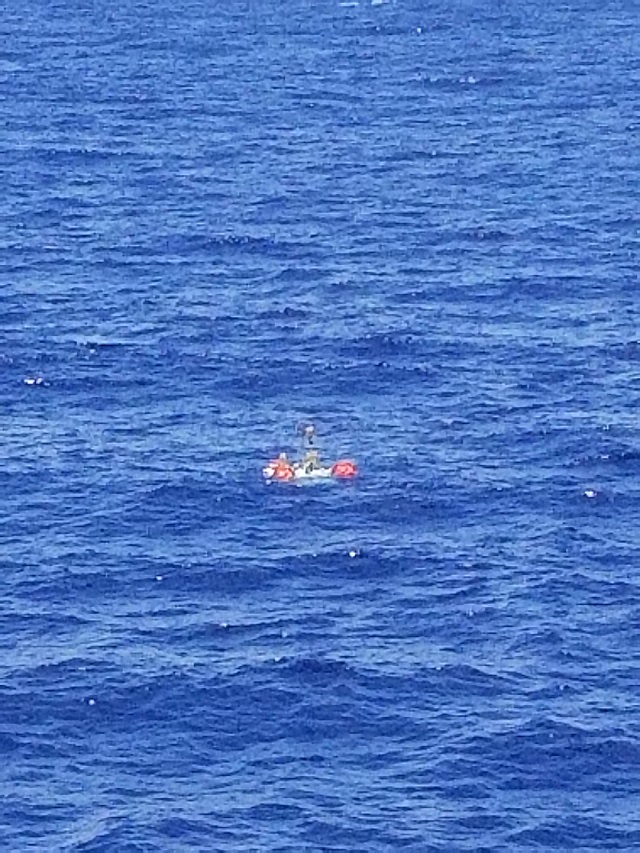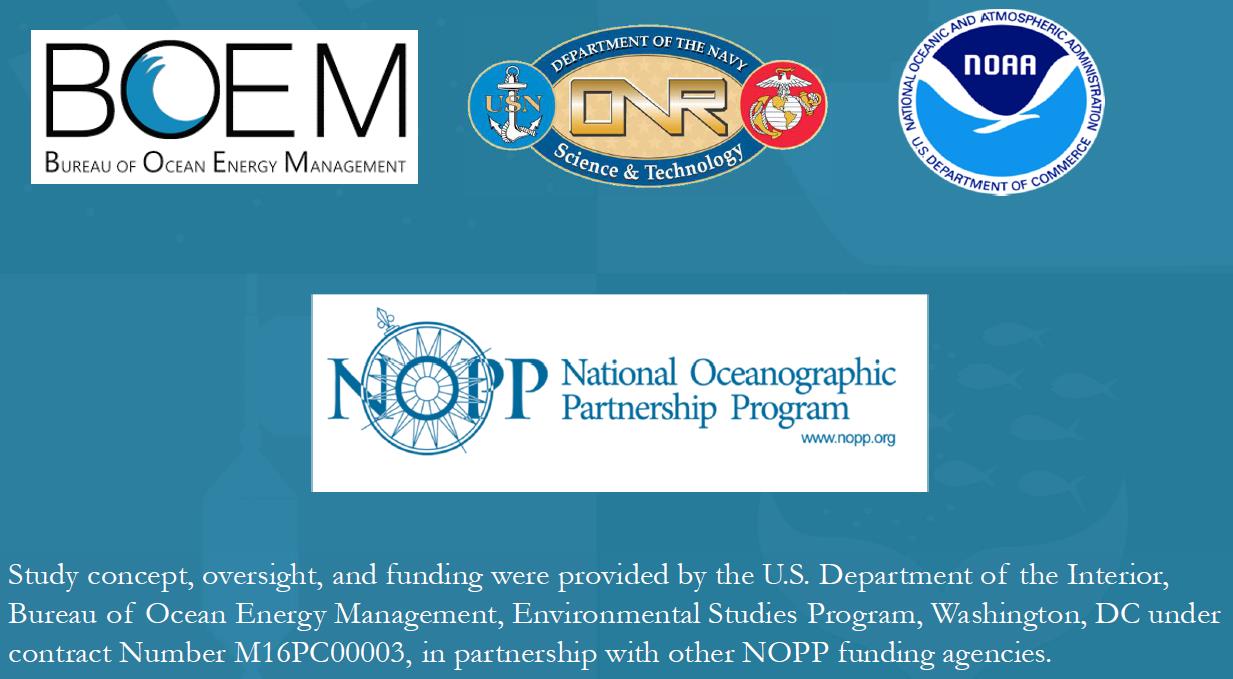You’d be surprised at what you become fixated on when you’ve seen nothing but blue for two weeks. Our world on land is filled with visual stimulation. Our brains crave it. I know we like to roll our eyes at the youths and their addictions to screens and gadgets, but our cavemen ancestors were staring into fire and drawing on cave walls since before Snapchat. Out here, it’s all blue. Blue water and blue sky. It’s especially disorienting when the water tries to match the sky (or vice-versa) and you can’t really tell where the horizon is. Anything that breaks up the blue and catches your eye becomes deeply interesting. The following is a short list of eye catchers that briefly intrigued me, and my fellow scientists, while staring out to sea, and not engaging on social media.
Sargassum

By far the most common natural flotsam has been mats of seaweed (Genus Sargassum). It was more common at our more southern sites and on transit. It became rare and virtually absent as we approached our more northern site. On my marine mammal watches that lacked marine mammals, I was grateful for the occasional patch floating by to break up the monotony a little bit. The sizes ranged from little bits that could fit in the palm of your hand to huge mats that pods of dolphins could hide underneath. When we think of plants, we think of roots that hold them firmly to the ground, or in the case of kelp, holdfasts that anchor them to rocks or corals. Some species of Sargassum do occur in beds but the kinds that floated by us were completely pelagic, meaning they don’t ever hold fast to the seabed, but drift about in the ocean throughout their life cycle. They have numerous, tiny gas-filled bladders to help keep them afloat and take advantage of the sunlight for photosynthesis. These mats of seaweed are ecosystems unto themselves and provide habitat and nursery grounds for a variety of larval fish. The area of the northern mid-Atlantic Ocean where American and European eels go to mate, the Sargasso Sea, is named for this remarkable plant.
Animals

Even though I spent 1.5 hours staring at the ocean per day for my marine mammal observation watch, I saw few charismatic megafauna. There was a sighting of an ocean sunfish (Mola mola), the heaviest bony fish, by another scientist. There was one day of an excess of dolphin and pilot whale observations – at our final sampling site off the coast of Virginia. The fact that there was a tuna fishing tournament happening around us as well was probably not a coincidence. Several people saw sharks along with dolphins. I managed to spot a single, big shark about 500 meters from the boat when I was on my marine mammal observation watch. It languidly swam near the surface for about 10 minutes with just its dorsal fin visible and the top half of its caudal fin swishing back and forth. The sea creature I saw most often in situ was probably flying fishes (Family Exocoetidae). They came bursting out of the bow waves and soared above the waves for several seconds before landing back in the water. According to BBC News, the longest flight of a flying fish recorded is 45 seconds (http://news.bbc.co.uk/2/hi/science/nature/7410421.stm). I didn’t witness a flight quite that long, but they were still remarkable.
Lander

|

|
This man-made piece of oceanographic equipment is mostly benthic but has a brief planktonic stage. At each of our sites, scientists on board sent signals to a lander that had been hanging out on the bottom for six months, collecting data, to come to the surface. Once that signal is sent, the lander rises to the surface and becomes a helpless bit of plankton floating on the current. Scientists not asleep or otherwise engaged go out on deck to spot the lander and ensure we don’t lose sight of it. The ship’s crew maneuver the boat so that the lander will come along the starboard side and other crew and scientists hook the lander to bring it on board.
Trash
Since the report of trash from the deepest and most remote part of all the oceans, the Marianas Trench (https://news.nationalgeographic.com/2018/05/plastic-bag-mariana-trench-pollution-science-spd/) and before, we’ve known that no part of the earth is too remote for our discard. You can usually count on plastic bottles, cups, or styrofoam eventually bobbing by and they are disproportionately interesting considering we usually barely give litter a second glance on land. If the litter is moving toward you, however, and you know you will eventually lose sight of this deeply interesting new development, it becomes something to be gazed at through binoculars for a long time. Along with the usual refuse mentioned above, this cruise featured several shiny and brightly colored Mylar balloons over several days and kilometers of ocean. Some crew members even witnessed an airborne but sinking balloon meet its final resting place on the water out in the middle of nowhere. It gives me a new appreciation of Tom Hanks’ special relationship he had with Wilson. You better believe by week 5 out here, I’d etch a face on a deflated balloon and give it a name.
Vessels

Again, do we even register other cars when we’re driving on land, much less take pictures of them when they pass?? Of course not. And yet, here I am taking a picture of the perfectly ordinary cargo ship steaming by. I thought I’d died and gone to heaven when we were surrounded by eight fishing boats one day. Eight different boats to gaze at! We’ve also seen big Navy ships and a cruise ship. No pirate ships that I know of.
And finally…..Land Ho!



